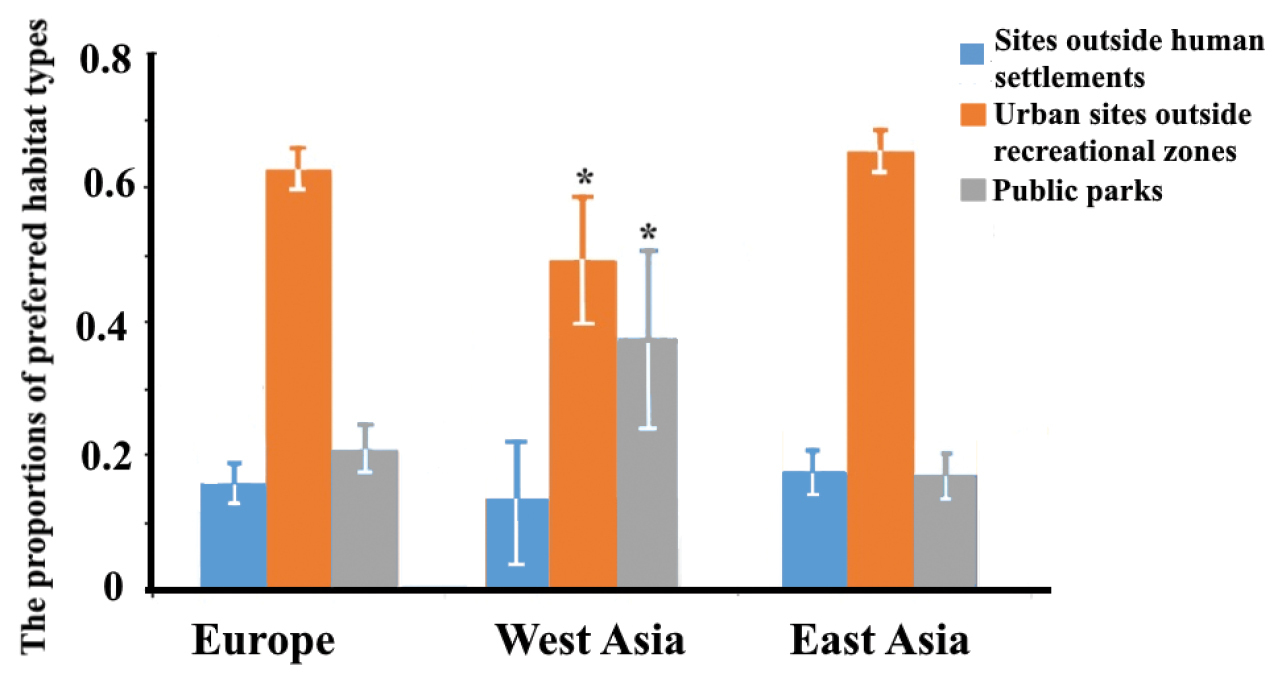
|
||
|
Comparison of the distribution of red-eared sliders among habitats in three different parts of the Eurasian invaded range. See details of habitat coding in Suppl. material 4. Whiskers show 95% Wald’s confidence intervals. A multiple comparison of proportions of the same habitat types in different parts of the invaded range was performed using the Chi-square (Biotope 1: 12.5, df = 2, p = 0.001; Biotope 2: 1378.8; df = 2, p < 0.001; Biotope 3: 5.8, df = 2, p = 0.06) and Tukey’s Post hoc tests. Significant differences between proportions of the same biotopes in different parts of the range are marked by *. |